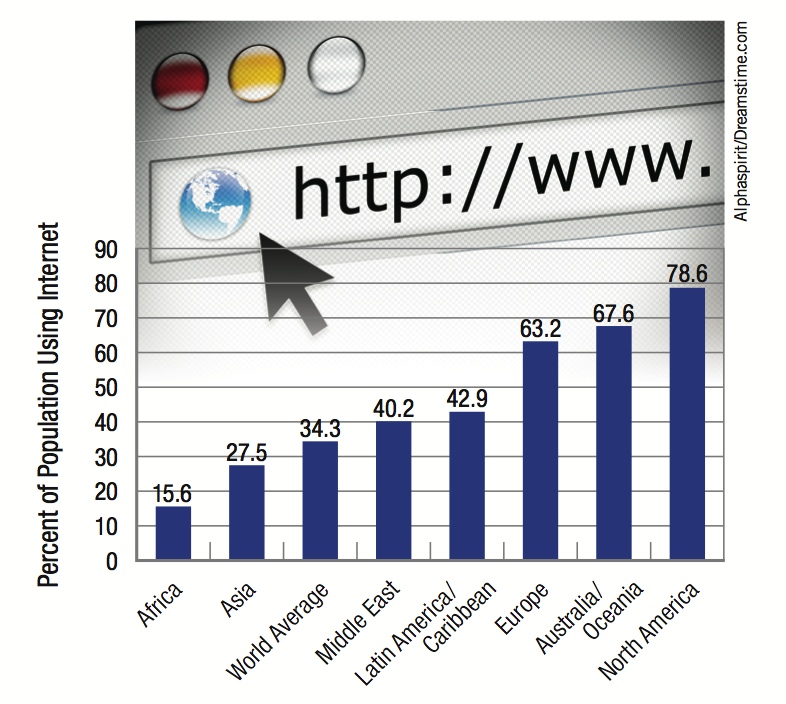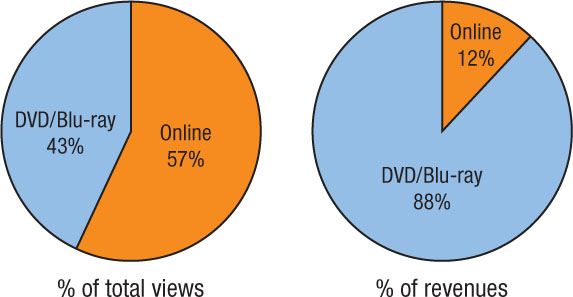Chapter Introduction

After studying this chapter you should be able to:
- Describe the similarities and differences among the three main types of networks.
- Explain what a network good is and how consuming a network good generates an external benefit.
- Describe the steps in deriving a demand curve for a network good.
- Describe how networks can rapidly expand or decline due to network effects.
- Describe the strategies firms use to compete in the market for network goods.
- Discuss the role of regulation in promoting network efficiency and competition.
- Explain how compatibility of industry standards can promote competition.
- Explain how interconnection promotes competition in industries with essential facilities.

When you use your AT&T cell phone to call your mother on her Verizon cell phone, do you ever consider what would happen if Verizon refused to connect your call from the AT&T network? Of course not—this just does not happen in the United States. But this is not always the case in other parts of the world. In Nigeria, for example, it is common for cell phone providers to ignore calls placed by callers using competing networks. The result? If you want to call your mom using a different network than hers, it might not work. In countries where customers using different networks are unable to place calls to one another reliably, people often carry multiple phones to make sure they can connect with their families and friends.
As this example illustrates, networks are an important part of our daily lives. In the United States, we often take networks for granted, failing to appreciate that without the efficient functioning of networks, we would be forced to endure a great deal of inconvenience and frustration. Where would you be without the word processing software you use to work collaboratively with others on group projects, or without the social networking site you use to stay in touch with friends?
This chapter studies the role of networks and network goods. Companies that provide network goods engage in competitive strategies to maintain the strength of their networks. Network industries tend to be volatile, and a market leader can quickly evaporate in this type of industry. Do you remember Friendster, AltaVista, Netscape, WordPerfect, and Sega Genesis? Each of these networks was once the market leader in its respective industry, but quickly lost its dominance when an opposing network became stronger.
Network goods are unique in economic analysis. Network goods have a different type of demand curve than we have previously seen, which makes them interesting to economists. More important, because of the nature of network industries, firms that provide network goods often become monopolies in their industries and devise strategies to maintain their monopoly status. However, these seemingly unbeatable monopolies are often short-lived, as was the case with the social networking company Myspace, which had gone from the world’s most popular social network to one that is now struggling to reinvent itself as a niche social network. The fleeting nature of some network monopolies raises the question of where network goods fall in the market structure analysis we introduced in Chapters 8 to 10. Are they monopolies, oligopolies, fierce competitors, or somehow a mixture of these market structures? Also, the market for network goods exhibits externalities, a concept studied in the previous chapter, which influence how firms allocate their resources to maximize profits.
How We Are Connected Today
The importance of networks in the global economy has led to dramatic growth in network goods over the past decade, especially those that use the Internet. As network capabilities continue to expand, industries and markets will transform and people everywhere will adjust to the new way of life.

Which device can you not live without? The New York Times reported a study by Forrester Research that shows the device (television, computer, cell phone) people of different ages feel they are least able to live without. Older individuals still value the television the most, and younger individuals value computers and cell phones more.

The percentage of people using the Internet as of 2012 varied significantly around the world. However, developing regions are rapidly catching up. Over the past 10 years, while the number of Internet users has doubled in the developed world, it has increased 25-fold in Africa.


The powerful role of network effects can be seen in the rise and fall of market share for word processing software over the past two decades. In 1990, WordPerfect was the market leader, but saw its market share steadily decline as Microsoft Word became the dominant software provider. However, the recent introduction of Google Docs has begun to take some market share from Microsoft. Will we see another change in market leader in the next decade?

The number of online movie downloads and streaming views surpassed total DVD and Blu-ray movie unit sales for the first time in 2012. However, DVD and Blu-ray sales still generated 88% of revenues in the home-viewing movie market.
This chapter begins by defining three types of networks and discussing the importance of network effects, a concept related to externalities. We then describe how a network demand curve is derived based on network capacity. We go on to analyze equilibrium in the network industry, and explain how networks can expand or decline quickly due to network effects, which can lead to a successful or failed network. Because of the speed with which networks can expand or decline, firms engage in a variety of competitive strategies to promote and sustain their network. Finally, we look at the role of government regulation in network industries. One example of such regulation is the requirement that networks interconnect, which allows multiple networks, no matter the size, to coexist in a competitive market. But regulation also creates costs, and the tradeoff between the benefits and costs of a regulatory policy helps to determine whether such regulations are necessary.